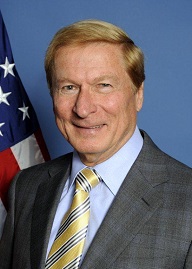For decades, credit unions have sold themselves as being different than other financial institutions. Their corporate structure as cooperatives made them different in form but the difference went beyond just that. They were smaller, dedicated in philosophy and practice to their members, offered better savings and lower loan rates, were physically located in the company or community they served, and everyone at the credit union knew your name.
Unfortunately, the world doesn’t stand still and unless you change when it does, it will leave you behind.
Credit unions saw that and believed the only way they could survive and continue to grow was to offer more services and look more like their competition – the bank just down the block.
There are those who will argue that that is not the case and that credit unions continue to be different from banks. A comparison of products offered by both would in itself beg to differ. Add in comparing the brick and mortar of each and you will find that many credit union facilities are more elegant than the banks’. And then there are those that have taken the words “credit union” out of their name.
Pointing out these changes in philosophy, appearance, name and marketing strategy are not in any way meant to criticize those who have chosen that path. Clearly it has worked for many and has resulted in success and longevity.
The decline in the number of credit unions for a variety of reasons has enabled those who did change to grow and prosper. These achievers benefited from those credit unions that had no option but to merge or close as well as from those that decided it was easier to join forces with another in order to serve their members in a way they no longer could.
As a result of this transition, it continues to become more difficult to differentiate between banks and credit unions. For those who argue that credit unions are Main Street and banks are Wall Street, they may have failed to notice that those streets no longer run parallel and actually intersect. It should surprise no one to see a bank on the Southeast corner of Main and Wall and on the Northwest corner, a financial service center, a.k.a. your community credit union.
There still are many small credit unions committed to their members and not interested in growth or change but unfortunately those are the ones that have become “the merger candidates.”
No one can predict the future but one does not need a crystal ball to see that credit unions will continue to decrease in number and that the banks will continue to be the adverse competitor.
And most importantly, if you still want to be on Main Street you need to navigate Wall Street to get and stay there.
 Michael Fryzel is a Chicago-based attorney and former chairman of the NCUA board. He can be reached at meflaw@aol.com.
Michael Fryzel is a Chicago-based attorney and former chairman of the NCUA board. He can be reached at meflaw@aol.com.


